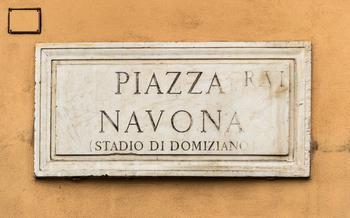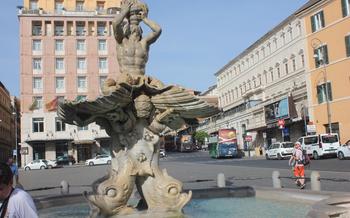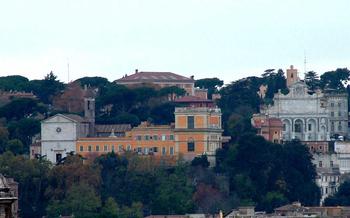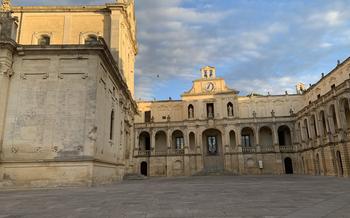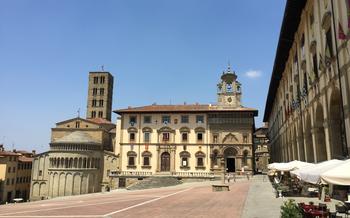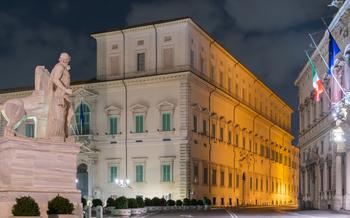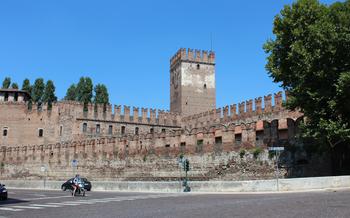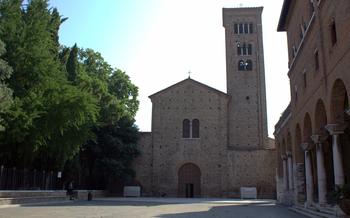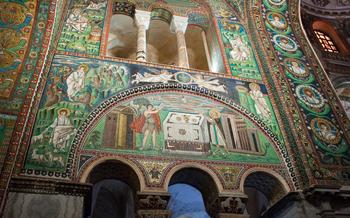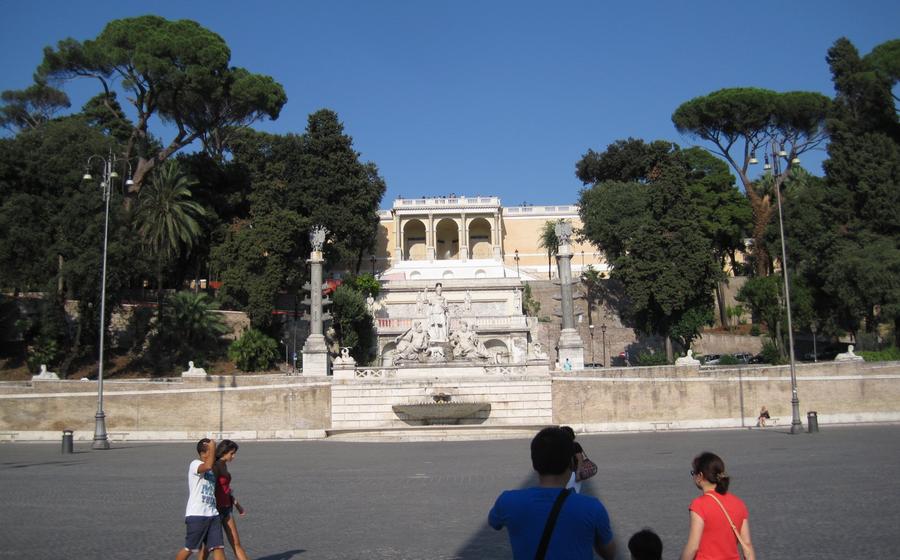
Piazza del Popolo
- Introduction - The Allure of Piazza del Popolo
- Laying the Groundwork for Your Adventure
- Unpacking the History and Significance
- The Obelisk at Piazza del Popolo - Witnessing Egyptian Grandeur
- Exploring Santa Maria del Popolo - A Haven for Art and Faith
- Piazza del Popolo Fountains - A Dance of Water and Art
- Views Atop Pincian Hill - A Panoramic Feast
- The Twin Churches - A Mirror Image of Beauty
- Shopping Delights - A Retail Haven Awaits
- Special Events and Festivals - A Celebration of Life
- Hidden Gems - Unveiling Local Secrets
- Insider Tip - A Secret Viewpoint: The Magic of Discovering the Hidden
Introduction - The Allure of Piazza del Popolo
At the very heart of Rome, a piazza of extraordinary beauty and allure awaits - Piazza del Popolo. Like a grand stage set for centuries of drama and delight, this iconic square has witnessed the ebb and flow of history, art, and culture. Its name, meaning "Square of the People," hints at its significance as a gathering place, a crossroads where locals and visitors intertwine to create a tapestry of vibrant life. As you step into this enchanting piazza, be prepared to embark on a journey through time, where every cobblestone whispers tales of empires and artists, saints and sinners.
Prepare to be captivated by the harmonious blend of architectural masterpieces, each telling a unique story. Marvel at the towering obelisk, a majestic testament to ancient Egyptian grandeur. Explore the intricate details of Santa Maria del Popolo, a sanctuary of art and faith. Admire the ornate doors that have borne witness to countless footsteps, each with a story to tell. Discover the harmonious symmetry of the twin churches, a testament to Rome's enduring legacy.
Laying the Groundwork for Your Adventure
To fully appreciate the magic of Piazza del Popolo, it's essential to understand its historical significance. In ancient times, this area was the starting point of the Via Flaminia, a vital road connecting Rome to the north. Emperors and generals, merchants and pilgrims all passed through this gateway, leaving their mark on the piazza's character. Over the centuries, it has undergone transformations, from a humble marketplace to a grand square adorned with fountains, sculptures, and elegant buildings.
Unpacking the History and Significance
Piazza del Popolo holds a mirror to Rome's rich and tumultuous past. In the Middle Ages, it was the site of public executions, a grim reminder of the city's darker days. During the Renaissance, it became a place of celebration, hosting lavish festivals and processions. In the 19th century, it witnessed the birth of the Italian Republic, as the tricolor flag was raised for the first time, marking a new era of freedom and unity. Today, Piazza del Popolo stands as a symbol of resilience, a place where history and modernity intertwine, creating a vibrant tapestry of life.
The Obelisk at Piazza del Popolo - Witnessing Egyptian Grandeur
Amidst the architectural marvels of Piazza del Popolo stands an enigmatic obelisk, a silent sentinel that bridges the gap between ancient Egypt and modern Rome. Originally hailing from the Temple of Heliopolis in Egypt, this towering monolith has witnessed the rise and fall of civilizations, carrying with it tales of power, devotion, and cultural exchange.
In the 10th century BC, Pharaoh Ramesses II erected this obelisk, dedicating it to the sun god Ra. Its intricate hieroglyphs pay homage to Ra's divine power and the pharaoh's eternal reign. Centuries later, Roman Emperor Augustus, captivated by its grandeur, ordered its transport to Rome. The obelisk's journey to the Eternal City was a testament to Roman ingenuity, requiring the construction of specialized ships and sleds capable of navigating the vast expanse of the Mediterranean Sea.
Upon its arrival in Rome, the obelisk found its home in the Circus Maximus, the city's ancient chariot-racing stadium. It stood as a symbol of imperial might, witnessing countless races and spectacles that enthralled the Roman masses. In the 16th century, Pope Sixtus V, driven by his vision of a grand urban renewal, commissioned the relocation of the obelisk to its current position in Piazza del Popolo. The obelisk's journey through the streets of Rome was a marvel of engineering, requiring the collaboration of hundreds of workers and the construction of a complex system of pulleys and ropes.
Today, the obelisk stands tall, a silent witness to the passage of time, its hieroglyphs whispering tales of ancient Egypt to the bustling crowds below. For visitors to Piazza del Popolo, the obelisk is not just an artifact but a gateway to another era, a reminder of the interconnectedness of civilizations and the enduring legacy of human ambition.
Exploring Santa Maria del Popolo - A Haven for Art and Faith
In the heart of Piazza del Popolo stands Santa Maria del Popolo, a masterpiece of Renaissance architecture that embodies the harmonious blend of art and spirituality. Its elegant façade, adorned with intricate carvings and sculptures, beckons visitors to step inside and discover a treasure trove of artistic wonders.
The interior of the church is a testament to the genius of some of Italy's most renowned artists. The intricate frescoes that adorn the walls and ceilings, depicting scenes from the life of the Virgin Mary and the saints, are a feast for the eyes. One cannot miss the Cappella Cerasi, a small chapel within the church, where two of Caravaggio's most famous paintings, "The Conversion of Saint Paul" and "The Crucifixion of Saint Peter", reside. These masterpieces, with their dramatic lighting and emotional intensity, have captivated art enthusiasts for centuries.
Beyond its artistic treasures, Santa Maria del Popolo holds historical significance as well. The church was built on the site of an ancient Roman gate, the Porta Flaminia, which served as the entry point to the city from the north. Over the centuries, the church has witnessed numerous historical events, including the coronation of Charlemagne as Holy Roman Emperor in 800 AD.
Fun Fact: The church's name, Santa Maria del Popolo, translates to "Saint Mary of the People", reflecting its connection to the ordinary citizens of Rome, who contributed to its construction.
Piazza del Popolo Fountains - A Dance of Water and Art
Adorning the Piazza del Popolo are two captivating fountains, designed by the renowned Baroque artist, Giovanni Lorenzo Bernini. These monumental structures not only display artistic mastery but also hold significance in Roman culture. The Fountain of Neptune depicts the mighty sea god, Neptune, surrounded by majestic sea creatures. Its intricate detailing and dynamic composition evoke a sense of awe and grandeur. At the opposite end, the Fountain of the Four Seasons presents a harmonious arrangement of four statues, each symbolizing a different season. The flowing water adds a mesmerizing element, creating a symphony of movement and sound that captivates visitors.
Beyond their artistic merit, these fountains hold symbolic value. Water has always played a crucial role in Roman life, representing purity, life, and abundance. The abundance of water in these fountains symbolizes Rome's wealth and prosperity, as well as its commitment to providing clean water for its citizens. Standing as testaments to artistic genius and cultural heritage, the Piazza del Popolo fountains are a must-see for anyone seeking to delve into the depths of Roman history and artistry.
Views Atop Pincian Hill - A Panoramic Feast
Ascend the elegant Pincian Hill, a verdant oasis overlooking Piazza del Popolo, and be rewarded with a panoramic feast. From this elevated vantage point, Rome unveils its architectural wonders like an open book. Gaze upon the iconic dome of St. Peter's Basilica, a majestic symbol of faith and grandeur. Let your eyes dance across the rooftops, domes, and spires that paint the Roman skyline, each carrying a story of its own.
Pincian Hill, once a private garden of the wealthy Pincian family, is now a beloved public park frequented by locals and tourists alike. Its tree-lined paths offer respite from the city's hustle and bustle, inviting you to stroll leisurely or bask in the warm Roman sun.
Capture the essence of Rome in a single photograph as you stand atop Pincian Hill, framing the city's iconic landmarks against the backdrop of the azure sky. This panoramic vista is a testament to Rome's rich history and enduring beauty, a memory you'll cherish long after you've left the Eternal City.
The Twin Churches - A Mirror Image of Beauty
In the heart of Piazza del Popolo, a harmonious pair of churches stands side by side, mirroring each other in architectural grace. Santa Maria in Montesanto and Santa Maria dei Miracoli are identical in their design, conceived as a testament to symmetry and unity. Constructed in the 17th century under the patronage of Pope Alexander VII, these churches were designed by the renowned architect Carlo Fontana, who sought to create a cohesive and visually striking ensemble.
The exteriors of these twin churches are characterized by their simple yet elegant facades, adorned with Corinthian pilasters and pediments that echo the classical Roman style. Their gently curved forms add a touch of dynamism to the otherwise linear streetscape. Entering these sacred spaces, one is greeted by an ethereal atmosphere, where light filters through the stained-glass windows, illuminating the intricate frescoes and marble sculptures that adorn the interiors.
Beyond their aesthetic harmony, these twin churches hold significance in Roman history. Santa Maria in Montesanto served as a refuge for artists during times of political turmoil, while Santa Maria dei Miracoli was a popular destination for pilgrims seeking divine intervention. These churches bear witness to the religious devotion and artistic patronage that have shaped Rome's cultural heritage.
Shopping Delights - A Retail Haven Awaits
Piazza del Popolo's allure extends beyond its historical and cultural significance, offering a delightful shopping experience for visitors. The area surrounding the Piazza is a haven for shoppers, with an array of boutiques, art galleries, and local shops catering to every taste and budget.
As you stroll along the picturesque streets, you'll find charming stores selling handmade crafts, traditional Italian souvenirs, and unique fashion items. Art enthusiasts will revel in the galleries showcasing contemporary and classical artwork, while those seeking one-of-a-kind treasures can explore the antique shops nestled in the side streets.
The shopping experience in Piazza del Popolo is uniquely Roman, with a focus on quality and craftsmanship. Whether you're looking for a special souvenir to remember your trip or a stylish outfit to blend in with the locals, you're sure to find it here.
Indulge in the joy of bargaining at the local markets, where you can haggle for the best prices on everything from leather goods to handmade jewelry. Don't be afraid to ask for discounts or bundle deals, as the shopkeepers are usually open to negotiation.
Remember, shopping in Piazza del Popolo is not just about acquiring material goods; it's an immersive experience that allows you to connect with the local culture and take home a piece of Roman charm.
Special Events and Festivals - A Celebration of Life
Piazza del Popolo, with its vibrant atmosphere and historical backdrop, serves as an alluring venue for a variety of special events and festivals. The piazza transforms into a kaleidoscope of colors, music, and merriments during these occasions.
The Piazza del Popolo Christmas Market is a true highlight, filling the air with the aromas of roasted chestnuts, mulled wine, and gingerbread. Festive stalls adorned with twinkling lights offer a treasure trove of handcrafted gifts, local delicacies, and seasonal treats. Amidst the merriments, choirs serenade the crowd with traditional carols, creating a truly magical ambiance.
The Festa del Sole, celebrated on June 21st, pays homage to the sun and marks the summer solstice. The piazza reverberates with music, dancing, and bonfires, creating a vibrant spectacle that draws locals and tourists alike. Performers showcase their talents, and the night sky illuminates with fireworks, casting a spellbinding glow on the piazza's iconic monuments.
During the summer months, the Cinema al Popolo film festival brings the magic of cinema to the piazza. Locals and cinephiles gather under the stars to enjoy classic and contemporary films projected onto a giant screen. With the majestic backdrop of the piazza, movie nights take on a unique and unforgettable charm.
Hidden Gems - Unveiling Local Secrets
Beyond the renowned attractions, Piazza del Popolo holds hidden gems waiting to be discovered. Just steps away from the Piazza, nestled within the enchanting Villa Borghese, lies the enchanting Temple of Aesculapius. This beautifully preserved 2nd-century Roman temple is dedicated to the god of medicine and features intricately carved bas-reliefs depicting scenes of healing and mythology. While lesser-known, this hidden treasure offers a tranquil oasis amidst the bustling city.
Strolling along Via del Babuino, art enthusiasts will stumble upon the Chiostro del Bramante, a 16th-century monastery transformed into an exhibition space. This hidden gem showcases contemporary art exhibitions, immersing visitors in a blend of history and modern creativity.
Unveiling another secret, the Museo Hendrik Christian Andersen, tucked away on Via Pasquale Stanislao Mancini, is a treasure trove for lovers of fairy tales. This museum houses the personal collection of the beloved Danish author, including original manuscripts, illustrations, and personal effects, offering a unique glimpse into the world of Hans Christian Andersen.
Insider Tip - A Secret Viewpoint: The Magic of Discovering the Hidden
Amidst the bustling Piazza del Popolo, there exists a hidden gem that offers a unique and breathtaking perspective. Nestled atop a quaint building, a secret viewpoint awaits those who seek a moment of tranquility and a chance to capture the essence of Rome's allure.
To reach this secluded spot, navigate your way through the charming streets adjacent to the Piazza, keeping an eye out for the discreet entrance to the building. As you ascend the winding staircase, anticipation builds, leading you to a hidden door. Behind it lies a terrace that will take your breath away.
The secret viewpoint unfolds before your eyes, revealing a panoramic vista of Piazza del Popolo as you have never seen it before. The iconic obelisk pierces the sky, while the picturesque Santa Maria del Popolo stands majestically in the foreground.
Savor the tranquility as you gaze upon the Piazza, teeming with life yet radiating an aura of serenity. Capture the essence of Rome in a single frame, etching the memory of this hidden treasure forever in your mind.
This secret viewpoint is your reward for venturing off the beaten path. Embrace the magic of discovering hidden gems that transform your travel experience into an unforgettable journey.
